Blog
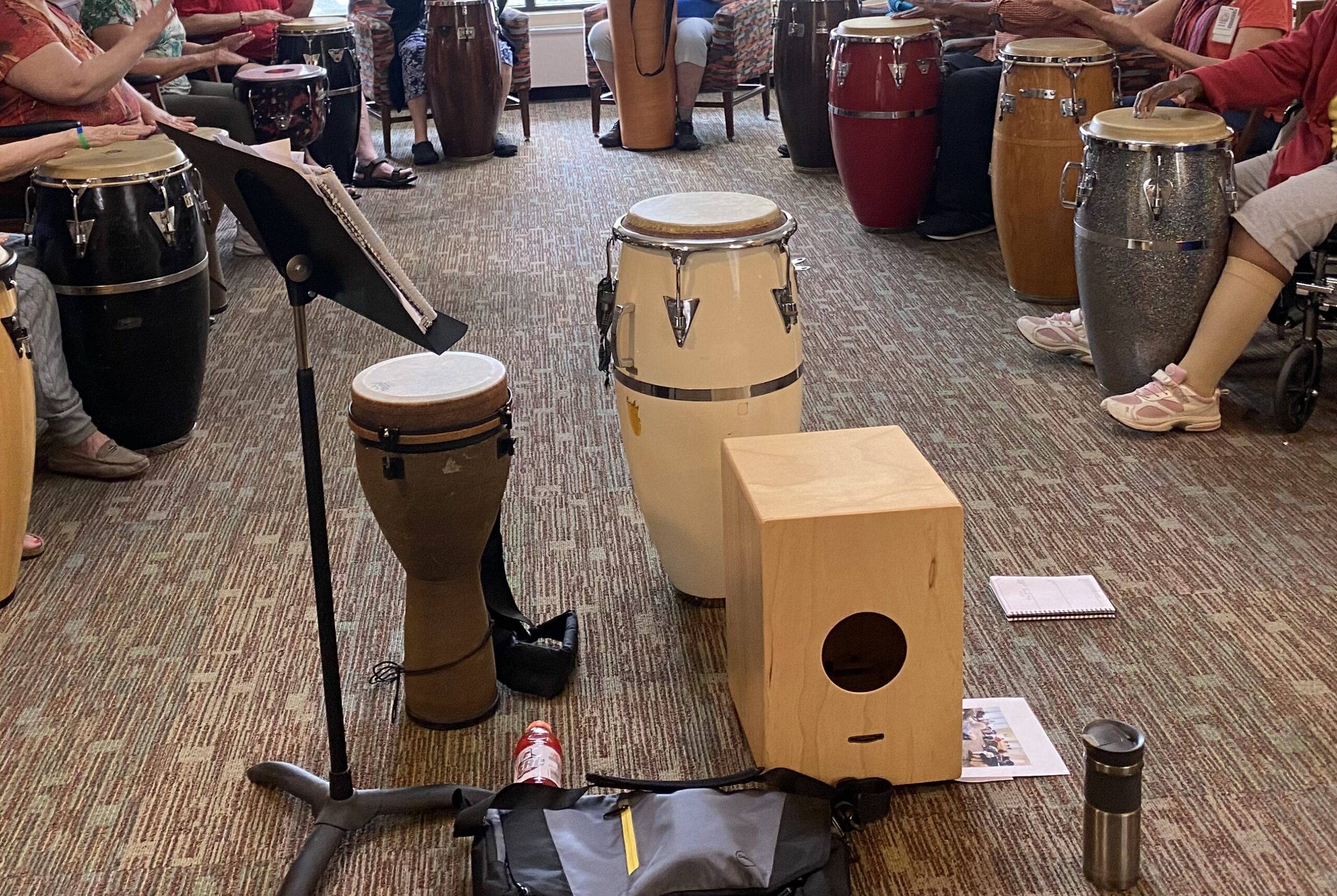
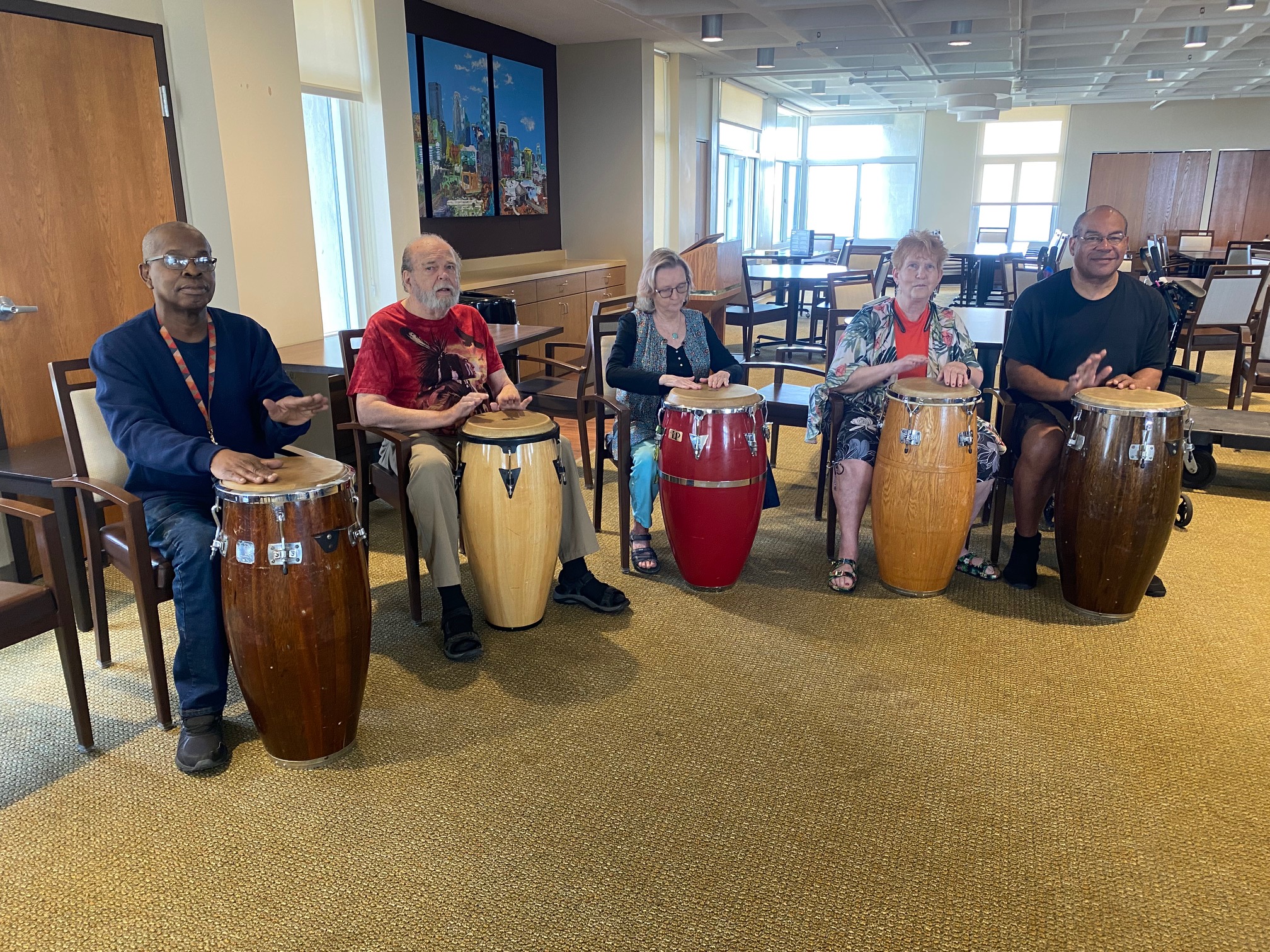
Messier 4 or M4 (also designated NGC 6121) is a globular cluster in the constellation of Scorpius. It was discovered by Philippe Loys de Chéseaux in 1745 and catalogued by Charles Messier in 1764. It was the first globular cluster in which individual stars were resolved.
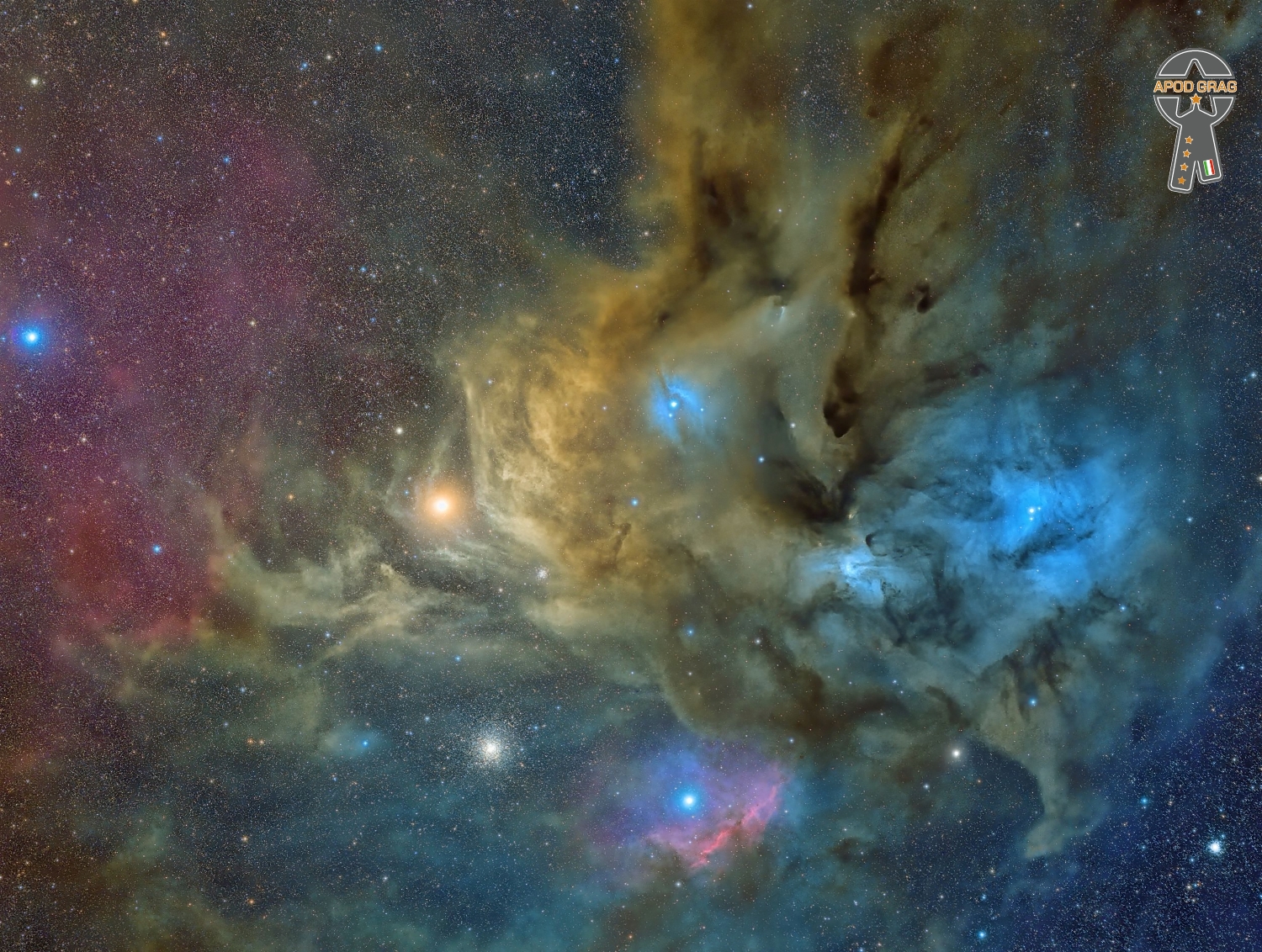
Donald Douglas Lamond Jr. (August 18, 1920 – December 23, 2003) was an American jazz drummer.
Born in Oklahoma City, Lamond attended the Peabody Conservatory in Baltimore in the early 1940s, and played with Sonny Dunham and Boyd Raeburn at the outset of his career. In 1944, he performed baritone saxophone and drums on Charlie Parker’s ‘’The Complete Savoy and Dial Studio Recordings 1944-1948’’and he took over Dave Tough‘s spot in Woody Herman‘s big band First Herd in 1945, where he remained until the group disbanded at the end of 1946. In 1947, he briefly freelanced with musicians including Charlie Parker, and then returned to duty under Herman in his Second Herd, where he remained until its 1949 dissolution. In the 1950s and 1960s Lamond found work as a session musician, recording in a wide variety of styles. He performed and recorded with Stan Getz, Zoot Sims, Johnny Smith, Benny Goodman, Ruby Braff, the Sauter-Finegan Orchestra, Sonny Stitt, Johnny Guarnieri, Jack Teagarden, Quincy Jones, George Russell, Count Basie, Lee Wiley (where he performed drums and guitar on her 1956 album ‘’West of the Moon’’ and Bob Crosby among others. He recorded as a bandleader in 1962 with a tentet which included Doc Severinsen. Later in the 1960s he played with George Wein‘s Newport Festival band. In the 1970s, he worked with Red Norvo, Maxine Sullivan, and Bucky Pizzarelli, and also put together his own swing group late in the decade, which recorded in 1977 and 1982. He also recorded a quartet album in 1981 with his wife, Terry Lamond, singing.
He died in 2003 in Orlando, Florida, from a brain tumor, at age 83.
more...
Enoch Henry Light (August 18, 1907 – July 31, 1978) was an American classically trained violinist, danceband leader, and recording engineer. As the leader of various dance bands that recorded as early as March 1927 and continuing through at least 1940, Light and his band primarily worked in various hotels in New York. For a time in 1928 he also led a band in Paris. In the 1930s Light also studied conducting with the French conductor Maurice Frigara in Paris.
Throughout the 1930s, Light and his outfits were steadily employed in the generally more upscale hotel restaurants and ballrooms in New York that catered to providing polite ambiance for dining and functional dance music of current popular songs rather than out-and-out jazz.
At some point his band was tagged The Light Brigade and they often broadcast over radio live from the Hotel Taft in New York, where they had a long residency. Through 1940, Light and his band recorded for various labels including Brunswick, ARC, Vocalion and Bluebird. In 1955, Light founded Grand Award Records and served as president and A&R chief. In 1959 he founded a subsidiary label, Command Records. Grand Award and its subsidiary labels were sold to ABC-Paramount Records in October 1959. Light’s name was prominent on many albums both as musician and producer.
Light was born in Canton, Ohio, on August 18, 1907. While he was a student at Johns Hopkins University, he formed his initial orchestra. When he took that group on tours of Europe in 1928 and 1929, he studied classical conducting at the Mozarteum in Salzburg and the Opera Comique in Paris. He also studied at Ohio State University and the University of Pittsburgh.
more...Antonio Salieri (18 August 1750 – 7 May 1825) was an Italian composer and teacher of the classical period. He was born in Legnago, south of Verona, in the Republic of Venice, and spent his adult life and career as a subject of the Habsburg monarchy.
Salieri was a pivotal figure in the development of late 18th-century opera. As a student of Florian Leopold Gassmann, and a protégé of Christoph Willibald Gluck, Salieri was a cosmopolitan composer who wrote operas in three languages. Salieri helped to develop and shape many of the features of operatic compositional vocabulary, and his music was a powerful influence on contemporary composers.
Appointed the director of the Italian opera by the Habsburg court, a post he held from 1774 until 1792, Salieri dominated Italian-language opera in Vienna. During his career, he also spent time writing works for opera houses in Paris, Rome, and Venice, and his dramatic works were widely performed throughout Europe during his lifetime. As the Austrian imperial Kapellmeister from 1788 to 1824, he was responsible for music at the court chapel and attached school. Even as his works dropped from performance, and he wrote no new operas after 1804, he still remained one of the most important and sought-after teachers of his generation, and his influence was felt in every aspect of Vienna’s musical life. Franz Liszt, Franz Schubert, Ludwig van Beethoven, Anton Eberl, Johann Nepomuk Hummel and Franz Xaver Wolfgang Mozart were among the most famous of his pupils. Salieri’s music slowly disappeared from the repertoire between 1800 and 1868 and was rarely heard after that period until the revival of his fame in the late 20th century. This revival was due to the fictionalized depiction of Salieri in Peter Shaffer‘s play Amadeus (1979) and its 1984 film version. The death of Wolfgang Amadeus Mozart in 1791 at the age of 35 was followed by rumors that he and Salieri had been bitter rivals, and that Salieri had poisoned the younger composer, yet it has been suggested this is false, and it is likely that they were, at least, mutually respectful peers.
more...The Soleá is a slow, solemn, and majestic flamenco form that likely comes from the Spanish word soledad, meaning solitude or loneliness. Tragedy, death, and desperation are the common subject matter for the Soleá cante (singers). Guitarists evoke these feelings in their playing as well. This tragic form is also known as the “Cante Jondo” category.
The Soleá is synonymous with the Soleares, known as the “Mother of Flamenco”. Flamenco guitarists usually begin their study with the Soleá since it has a relatively slow BPM (usually 50-110BPM). As a result, students have ample time to feel comfortable with the compás accents.
more...Sprawling emission nebulae IC 1396 and Sh2-129 mix glowing interstellar gas and dark dust clouds in this nearly 12 degree wide field of view toward the northern constellation Cepheus the King. Energized by its central star IC 1396 (left), is hundreds of light-years across and some 3,000 light-years distant. The nebula’s intriguing dark shapes include a winding dark cloud popularly known as the Elephant’s Trunk below and right of center. Tens of light-years long, it holds the raw material for star formation and is known to hide protostars within. Located a similar distance from planet Earth, the bright knots and swept back ridges of emission of Sh2-129 on the right suggest its popular name, the Flying Bat Nebula. Within the Flying Bat, the most recently recognized addition to this royal cosmic zoo is the faint bluish emission from Ou4, the Giant Squid Nebula. Near the lower right edge of the frame, the suggestive dark marking on the sky cataloged as Barnard 150 is also known as the dark Seahorse Nebula.
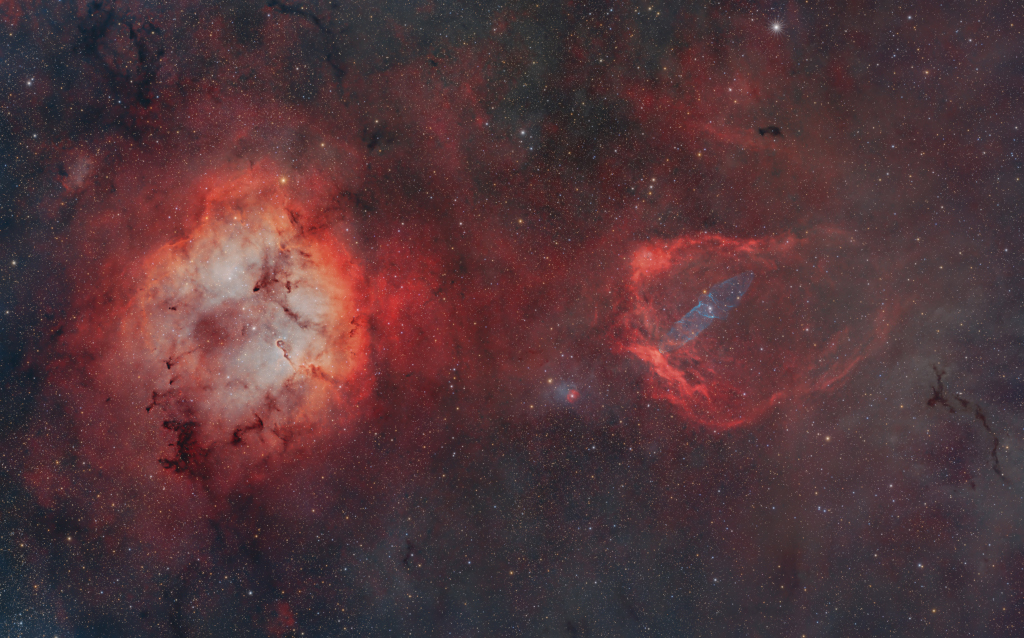
more...
Luther Allison (August 17, 1939 – August 12, 1997) was an American blues singer-songwriter and guitarist. He was born in Widener, Arkansas, although some accounts suggest his actual place of birth was Mayflower, Arkansas. Allison was interested in music as a child and during the late 1940s he toured in a family gospel group called The Southern Travellers. He moved with his family to Chicago in 1951 and attended Farragut High School where he was classmates with Muddy Waters‘ son. He taught himself guitar and began listening to blues extensively. Three years later he dropped out of school and began hanging around outside blues nightclubs with the hopes of being invited to perform. Allison played with the bands of Howlin’ Wolf and Freddie King, taking over King’s band when King toured nationally. He worked with Jimmy Dawkins, Magic Sam and Otis Rush, and also backed James Cotton. Chicago Reader has called him “the Jimi Hendrix of blues guitar”.
Luther Sylvester Allison was born on August 18, 1939, in Widener, Arkansas, the fourteenth of 15 children. His family moved to Chicago when he was 12, in search of better opportunities. Several of Allison’s siblings sang in a gospel group called the Southern Travellers. One of his older brothers, Ollie, soon began working as a guitarist on Chicago’s booming South Side blues scene. Seeking to emulate his brother, Luther took up the guitar himself. By the middle of his teens, Allison was good enough to sit in with his brother’s band on club dates. During his tour in the summer of 1997, Allison checked into a hospital on July 10, 1997 for dizziness and loss of coordination. It was discovered that he had a tumor on his lung that had metastasized to his brain. He began radiation therapy on July 16, which lasted through August 1. In and out of a coma, Allison died at around 2:30 A.M. on August 12, 1997
more...Floyd Westerman, also known as Kanghi Duta (“Red Crow” in Dakota) (August 17, 1936 – December 13, 2007), was a Dakota Sioux musician, political activist, and actor. After establishing a career as a country music singer, later in his life he became an actor, usually depicting Native American elders in American films and television. He is also credited as Floyd Red Crow Westerman. As a political activist, he spoke and marched for Native American causes.
He was born Floyd Westerman on the Lake Traverse Indian Reservation, home of the Sisseton Wahpeton Oyate, a federally recognized tribe that is one of the sub-tribes of the Eastern Dakota section of the Great Sioux Nation, located in the U.S. state of South Dakota. His Indigenous name Kanghi Duta means “Red Crow” in the Dakota language (which is one of the three related Siouan languages of the Great Plains).
At the age of 10, Westerman was sent to the Wahpeton Boarding School, where he first met Dennis Banks(who as an adult became a leader of the American Indian Movement). There Westerman and the other children were forced to cut their traditionally long hair and forbidden to speak their native languages. This experience would profoundly impact Westerman’s development and entire life. As an adult, he reclaimed his heritage and became an outspoken advocate for Indigenous cultural preservation.
Westerman graduated from Northern State University with a B.A. degree in secondary education. He served two years in the US Marines, before beginning his career as a country singer.
more...Columbus Calvin “Duke” Pearson Jr. (August 17, 1932 – August 4, 1980) was an American jazz pianist and composer. Allmusic describes him as having a “big part in shaping the Blue Note label’s hard bopdirection in the 1960s as a record producer.”
Pearson was born Columbus Calvin Pearson Jr. in Atlanta, Georgia, United States, to Columbus Calvin and Emily Pearson. The moniker “Duke” was given to him by his uncle, who was a great admirer of Duke Ellington. Before he was six, his mother started giving him piano lessons. He studied the instrument until he was twelve, when he took an interest in brass instruments: mellophone, baritone horn and ultimately trumpet. He was so fond of the trumpet that through high school and college he neglected the piano. He attended Clark College while also playing trumpet in groups in the Atlanta area. While in the U.S. Army, during his 1953–54 draft, he continued to play trumpet and met, among others, the pianist Wynton Kelly.Pearson himself confessed in a 1959 interview that he was “so spoiled by Kelly’s good piano” that he decided to switch to piano again. Also, it seems that dental problems forced him to give up brass instruments. He was diagnosed with multiple sclerosis in the 1970s, from which he died in 1980 at Atlanta Veterans Hospital.
more...Jack Sperling (August 17, 1922 – February 26, 2004) was an American jazz drummer who performed as a sideman in big bands and as a studio musician for pop and jazz acts, movies, and television.
In 1941 he played with trumpeter Bunny Berigan. After World War II, he and Henry Mancini joined the Glenn Miller band when it was led by Tex Beneke. Sperling drew attention with his performance on the song St. Louis Blues (1948). He then joined Les Brown and His Band of Renown, which played regularly for the Bob Hope radio program. Sperling and other members of Brown’s band joined Dave Pell‘s octet in 1953. He recorded with octet on Plays Irving Berlin (1953) and on The Original Reunion of the Glenn Miller Orchestra (1954). From 1954–57, he was a member of Bob Crosby‘s Bobcats. During the rest of his career, he worked in bands led by Charlie Barnet, Page Cavanaugh, Pete Fountain, and Benny Goodman.
more...Ike Abrams Quebec (August 17, 1918 – January 16, 1963) was an American jazz tenor saxophonist. He began his career in the big band era of the 1940s, then fell from prominence for a time until launching a comeback in the years before his death.
Critic Alex Henderson wrote, “Though he was never an innovator, Quebec had a big, breathy sound that was distinctive and easily recognizable, and he was quite consistent when it came to down-home blues, sexy ballads, and up-tempo aggression.”
Quebec was born in Newark, New Jersey, United States. An accomplished dancer and pianist, he switched to tenor sax as his primary instrument in his early twenties, and quickly earned a reputation as a promising player. His recording career started in 1940, with the Barons of Rhythm. Quebec’s comeback was short-lived; it was ended by his death in January 1963, at the age of 44 from lung cancer. He is buried at Woodland Cemetery, Newark, New Jersey.
more...Two large galaxies are merging at the center of this sharp telescopic field of view. The interacting system cataloged as Arp 93 is some 200 million light-years distant toward the constellation Aquarius in planet Earth’s sky. Individually the galaxies are identified as NGC 7285 (right) and NGC 7284. Their bright cores are still separated by about 20,000 light-years or so, but a massive tidal stream, a result of their ongoing gravitational interaction, extends over 200,000 light-years toward the bottom of the frame. Interacting galaxies do look peculiar, but are now understood to be common in the Universe. In fact, closer to home, the large spiral Andromeda Galaxy is known to be approaching the Milky Way. Arp 93 may well present an analog of their distant future cosmic embrace.
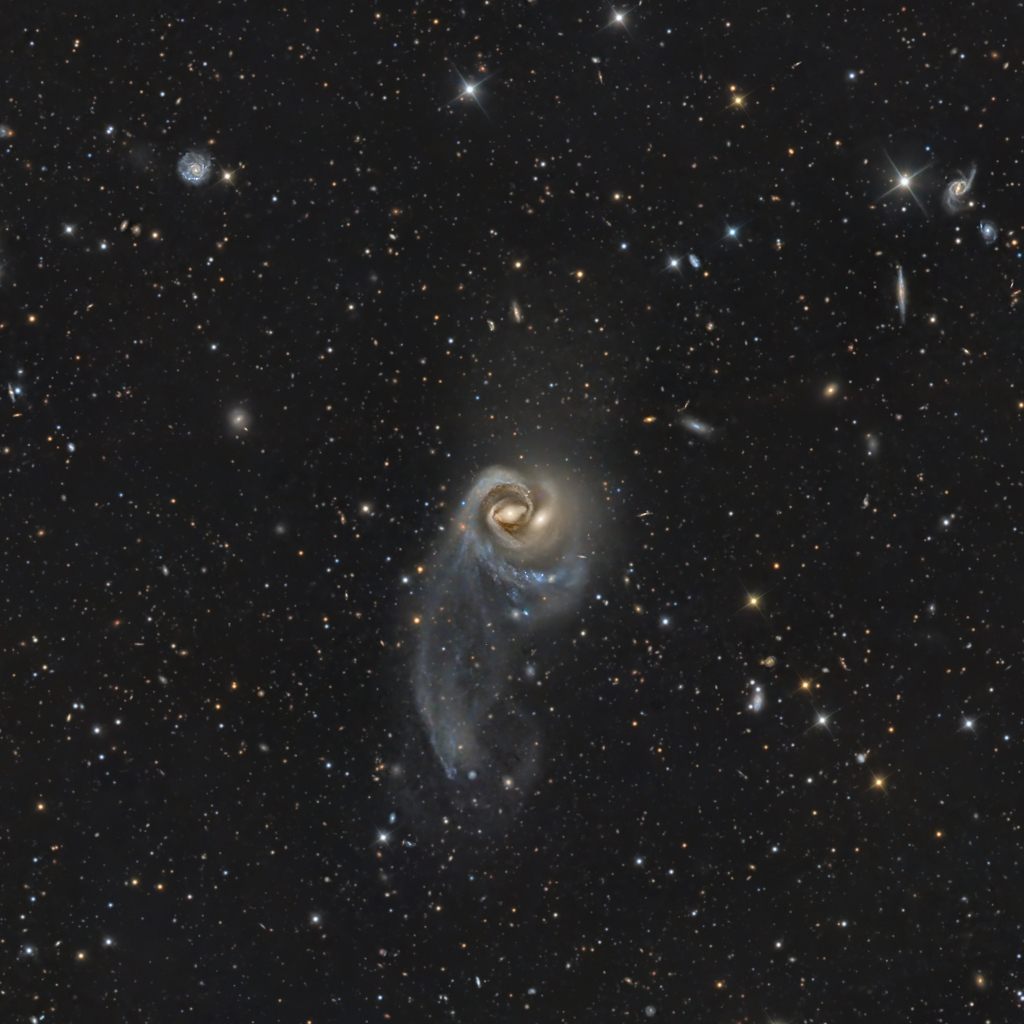
Madonna Louise Ciccone ; born August 16, 1958 Bay City, MI) is an American singer, songwriter, and actress. Known as the “Queen of Pop“, Madonna has been widely recognized for her continual reinvention and versatility in music production, songwriting, and visual presentation. She has pushed the boundaries of artistic expression in mainstream music, while continuing to maintain control over every aspect of her career. Her works, which incorporate social, political, sexual, and religious themes, have generated both controversy and critical acclaim. A prominent cultural figure crossing both the 20th and 21st centuries, Madonna remains one of the most “well-documented figures of the modern age“,[3] with a broad amount of scholarly reviews, and literature and art works on her, as well as an academic mini subdiscipline devoted to her named Madonna studies.
Madonna moved to New York City in 1978 to pursue a career in modern dance. After performing as a drummer, guitarist, and vocalist in the rock bands Breakfast Club and Emmy, she rose to solo stardom with her debut studio album, Madonna (1983). She followed it with a series of successful albums, including all-time bestsellers Like a Virgin (1984), True Blue (1986) and The Immaculate Collection (1990), as well as Grammy Award winners Ray of Light (1998) and Confessions on a Dance Floor (2005). Madonna has amassed many chart-topping singles throughout her career, including “Like a Virgin“, “La Isla Bonita“, “Like a Prayer“, “Vogue“, “Take a Bow“, “Frozen“, “Music“, “Hung Up“, and “4 Minutes“.
Madonna’s popularity was enhanced by roles in films such as Desperately Seeking Susan (1985), Dick Tracy(1990), A League of Their Own (1992), and Evita (1996). While the lattermost won her a Golden Globe Award for Best Actress, many of her other films were not as well received. As a businesswoman, Madonna founded the company Maverick in 1992. It included Maverick Records, one of the most successful artist-run labels in history. Her other ventures include fashion brands, written works, health clubs, and filmmaking. She contributes to various charities, having founded the Ray of Light Foundation in 1998 and Raising Malawi in 2006, and advocates for gender equality and LGBT rights.
With sales of over 300 million records worldwide, Madonna is the best-selling female recording artist of all time. She is the most successful solo artist in the history of the U.S. Billboard Hot 100 chart and has achieved the most number-one singles by a woman in Australia, Canada, Italy, Spain, and the United Kingdom. With a revenue of over US$1.5 billion from her concert tickets, she remains the highest-grossing female touring artist worldwide. Forbes has named Madonna the annual top-earning female musician a record 11 times across four decades (1980s–2010s). She was inducted into the Rock and Roll Hall of Famein 2008, her first year of eligibility. Madonna was ranked as the greatest woman in music by VH1, and as the greatest music video artist ever by MTV and Billboard. Rolling Stone also listed her among its greatest artistsand greatest songwriters of all time.
more...Carl Perkins (August 16, 1928 – March 17, 1958) was an American jazz pianist.
Perkins was born in Indianapolis but worked mainly in Los Angeles. He is best remembered for his performances with the Curtis Counce Quintet, which also featured Harold Land, Jack Sheldon and drummer Frank Butler. He also performed with Tiny Bradshaw, Big Jay McNeely in 1948–49, and played dates with Miles Davis in 1950. Following a short stint in the Army (January 1951 to November 1952), he worked intermittently with the Oscar Moore Trio (1953-1955) and the Clifford Brown–Max Roach group in 1954. He recorded with Frank Morgan in 1955, and with his own group in 1956. Perkins composed the standard“Grooveyard”.
His playing was influenced by his polio-affected left arm, which he held parallel to the keyboard. He used his elbow to play deep bass notes. He was thus known as “the crab”.
He died of a drug overdose at age 29, in Los Angeles, California. He recorded one album, Introducing Carl Perkins, and a short series of singles under his own name. Authors Paul Tanner, Maurice Gerow, and David Megill cite Perkins as one of the best “funky”, or hard bop, piano players, but his early death prevented him from leaving a legacy.
more...William John Evans (August 16, 1929 – September 15, 1980) was an American jazz pianist and composer who worked primarily as the leader of his trio. His use of impressionist harmony, interpretation of traditional jazz repertoire, block chords, and trademark rhythmically independent, “singing” melodic lines continues to influence jazz pianists today.
Born in Plainfield, New Jersey, United States, he was classically trained at Southeastern Louisiana Universityand the Mannes School of Music, in New York City, where he majored in composition and received the Artist Diploma. In 1955, he moved to New York City, where he worked with bandleader and theorist George Russell. In 1958, Evans joined Miles Davis‘s sextet, which in 1959, then immersed in modal jazz, recorded Kind of Blue, the best-selling jazz album ever.
In late 1959, Evans left the Miles Davis band and began his career as a leader, with bassist Scott LaFaro and drummer Paul Motian, a group now regarded as a seminal modern jazz trio. In 1961, two albums were recorded at an engagement at New York’s Village Vanguard jazz club, Sunday at the Village Vanguard and Waltz for Debby; a complete set of the Vanguard recordings on three CDs was issued decades later. However, ten days after this booking ended, LaFaro died in a car accident. After months of seclusion, Evans reemerged with a new trio, featuring bassist Chuck Israels. In 1963, Evans recorded Conversations with Myself, a solo album produced with overdubbing technology. In 1966, he met bassist Eddie Gómez, with whom he worked for the next 11 years. During the mid-1970s Bill Evans collaborated with the singer Tony Bennett on two critically acclaimed albums: The Tony Bennett/Bill Evans Album (1975) and Together Again(1977).
Many of Evans’s compositions, such as “Waltz for Debby” and “Time Remembered“, have become standards, played and recorded by many artists. Evans received 31 Grammy nominations and seven awards, and was inducted into the DownBeat Jazz Hall of Fame.
Evans grew up in North Plainfield, New Jersey, the son of Harry and Mary Evans (née Soroka). His father was of Welsh descent and ran a golf course; his mother was of Ukrainian ancestry and descended from a family of coal miners.
more...More Posts
- Daily Roots with Burning Spear
- The Cosmos with PSR B1509-58
- Booker Ervin Day
- Illinois Jacquet Day
- Ethel Waters Day
- World Music with The Afrobeat Sudan Aid Project Funk Soul Highlife Music Compilation
- Daily Roots with Whirimako Black
- The Cosmos with M64
- Trilok Gurtu Day
- Pancho Sanchez Day
- Clifford Brown Day
- World Music with AR Log
- Daily Roots with Winston Hussey
- The Cosmos with PGC 42871
- Denny Laine Day
- Pim Jacobs Day
- Zoot Sims Day
- World Music with Troka
- Daily Roots with Hugh Madoo
- The Cosmos with NGC 604